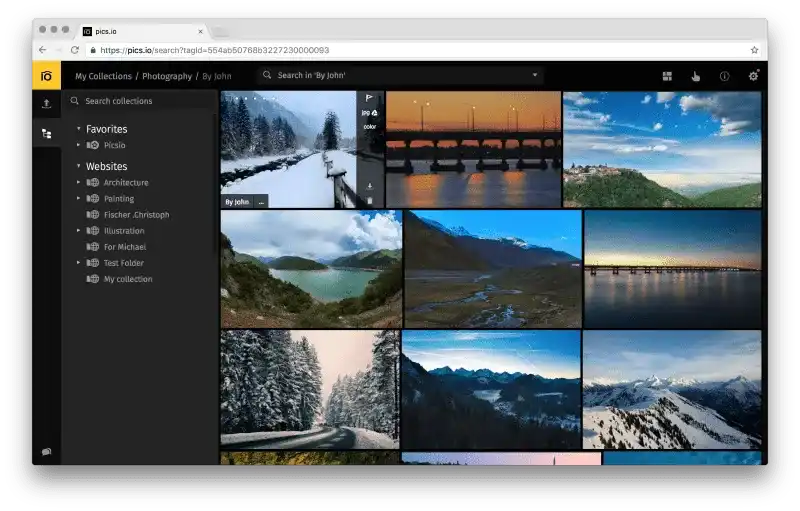In this article, you’ll learn:
In order to maximize brand reach and expand the auditory of customer’s, companies use the internet as a powerful production, marketing and sales platform.
But such an approach requires proficient and consistent work with massive amounts of data throughout significant periods of time. A natural question arises — is there an effective tool to organize this flow of information and make it convenient for the company? The answer is positive, and it amounts to digital asset management solution.
What is Digital Asset Management (DAM) and why to use it?
Digital Asset Management (DAM) is the process of storing, organizing and retrieving digital files, as well as managing the rights and permissions needed to perform these actions. While the types of data mentioned are countless, the most usual are rich media assets (images, video and audio files), which are an essential component of any line of work performed or depicted on the internet, — and general data files. Digital Asset Management is considered to be one of the most important components of Enterprise Content Management (ECM).
Ultimately, DAM aims to create a convenient and well-organized database of records containing the most important metadata related to specific files — names, formats, content, as well as any other information needed in order to properly use the digital asset in question. This is important to control the workflow of digital assets, taking into account the philosophy, politics, design and business goals of the owner company.
DAM makes a great investment for a team. Any DAM software works to make the process of storing, finding and retrieving of the needed digital assets convenient and fast for its end users. With a precise and clear library, every member of the creative team is able to easily retrieve the files that they may need in order to ensure high-quality work, granted that they have the rights necessary to access these files.

Who may need Digital Asset Management (DAM)?
With the ever-growing amount of data inside modern companies, the need to organize and retrieve it at need becomes essential. This statement is even more precise if the company has multiple employees working from abroad or at least outside of the main office.
Modern DAM software consolidates the digital resources of a company into one elegant system, allowing the company’s employees to perform their work without being chained to a specific working machine and storage space. DAM is a powerful integrative tool that simplifies the exchange of data between specific subunits of the company — and their respective end users.

Why should one use Digital Asset Management?
DAM systems make the process of organizing and using digital data faster and more convenient, significantly improving time-management results and coordination of work inside the company. Besides that, modern DAM software usually ensures a high level of security regarding the stored data.
A detailed digital asset library allows further integration of specific subunits of the company, transforming their routine exchange of files into a couple of simple clicks. This is especially important for those departments that are equally responsible for the end result of the working process — for example, the designer and writing teams, which collaborate to deliver top-quality content for the customer.
Digital Asset Management is also a powerful way of organizing the assortment of items that the company sells, as the data related usually includes images and videos, among other information. Gathering it in one database makes it possible for both the sales team, content managing team and designer team to access and modify the data related to a specific product in order to improve the overall performance of the company.
DAM software is particularly important for those lines of work that deal with massive amounts of digital data throughout the production process. In order to keep them in one place and accessible to any member of the working team, as well as organize the step by step workflow, a powerful and detailed library of files is essential.
What are the main types of modern DAM systems?
Choosing the best digital asset management system might not be easy. This is why you might want to know the main types of DAM systems available today.
Brand asset management systems — deal with the standard and essential content related to the company, meaning everything that makes the company a “brand”. The data related may include (but not be limited to) brand logos, often used specific fonts and color schemes, imagery of the main products.
Production asset management systems — usually specialize on dealing with content related to the production of a digital media item, as its components may need frequent revision and editing, depending on the stage of work. This is the ideal approach for organizing the material related to a video game, an animation or a 3D feature film.
Library asset management systems — work with massive data that is not meant to be changed frequently. After being organized once, the elements of such system are usually retrieved intact multiple times throughout the working process. For example, such a system may be used for photo or video storing.
Besides the functional types mentioned above, DAM systems can be divided into SaaS, on-premise and open-source systems.
SaaS (software as a service), also known as cloud-based or web-based DAM systems — are a modern type of DAM systems that store the information provided on remote servers, simplifying the hardware aspect for the company. SaaS systems are delivered to the customer in the form of software packages ready to use. They usually provide a high level of security for the stored files and easy secure remote access to the working team.
On-premise DAM systems — are a software that is installed on the specific company’s hardware, meaning that the customer provides the storage space and hardware to run the software (contrary to the SaaS DAM systems). This is a common choice for those organizations that strive to maintain absolute confidentiality of inner data.
Open-source DAM systems — are digital asset management software with a publicly opened source code, giving all the freedom and creative space necessary for the company’s IT team to modify it in order to best suit the specific needs of the organization. Such systems are highly flexible and universal, but require a high amount of specific work from the company’s IT team.
Digital asset management is a crucial part of the working process inside a modern company. Of course, the details should be personalized in order to fit the company’s budget and goals, but one thing remains certain — in the digital globalization era, data is the most valuable resource a company has. And digital asset management is the optimal way to keep it organized, clean and ready to be used.
Here's also 5 questions you can ask yourself before investing in DAM.
If you are looking for the simple and intuitive solution to get your files organized, we at Pics.io are here to help.
Follow this link to create a free account and experience all the advantages of the modern DAM system working on top of your Google Drive or Amazon S3. Not so long ago, Pics.io also released its own storage & became known as an all-in-one DAM solution.




